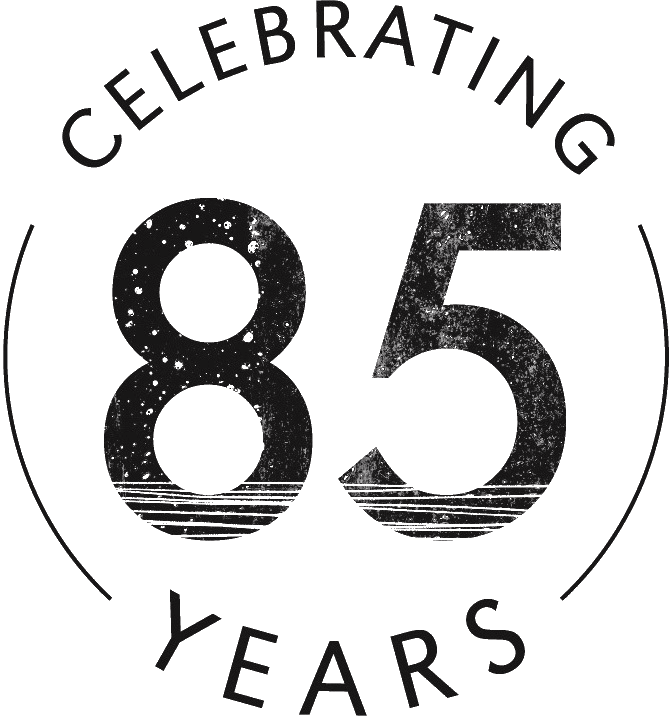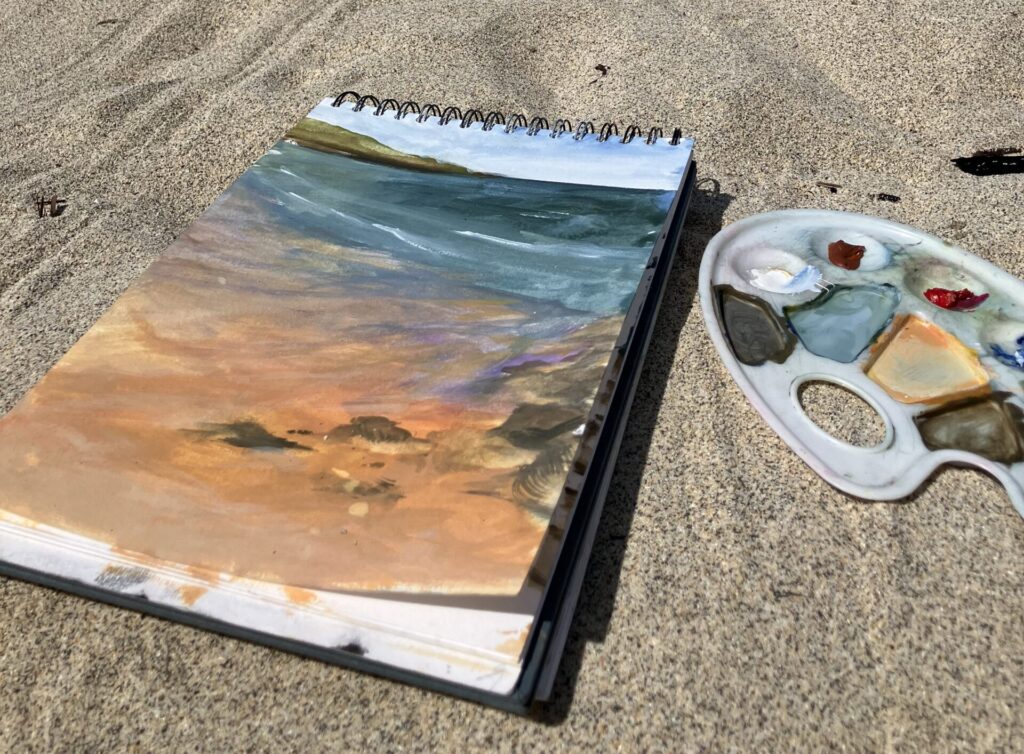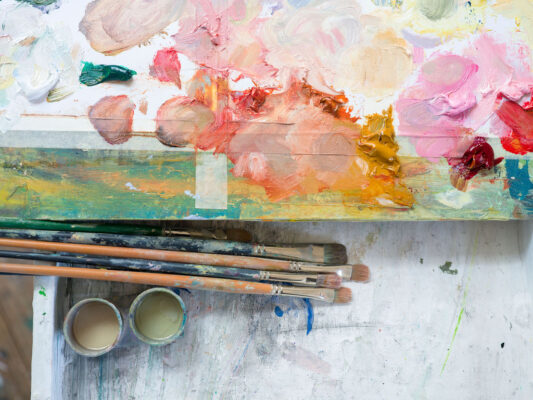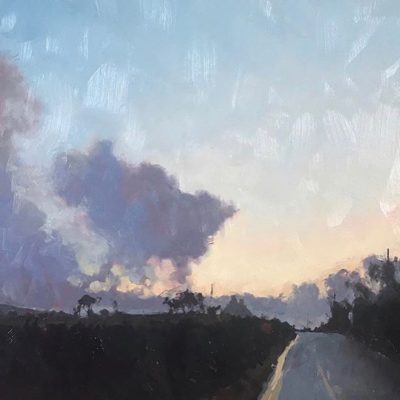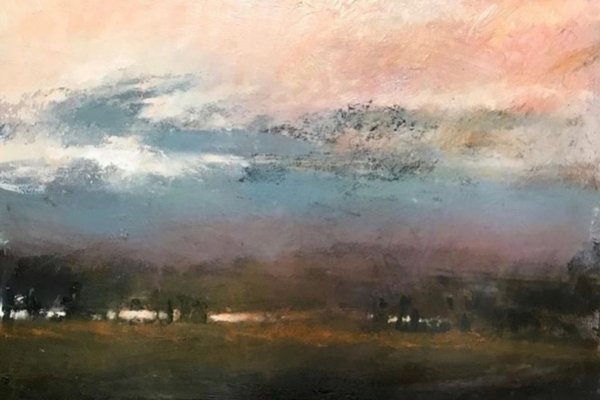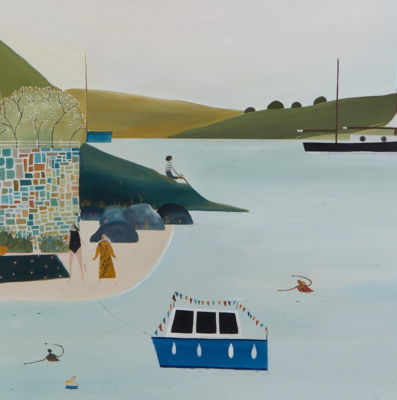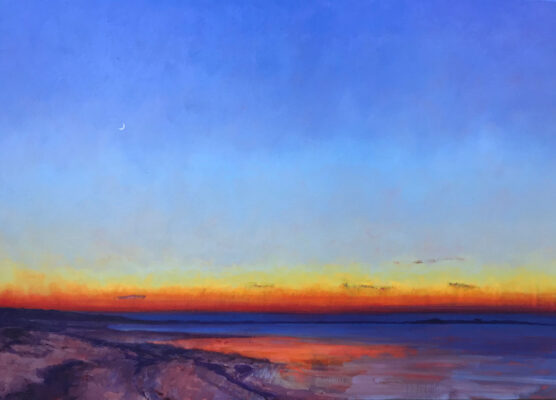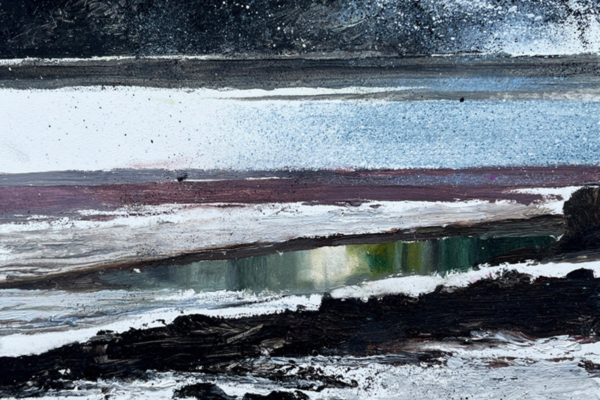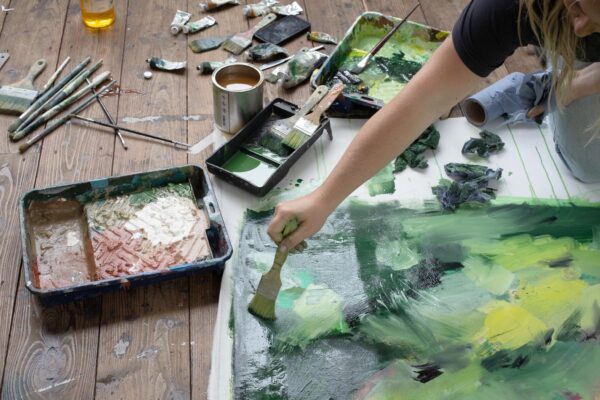Course details
A thorough introduction to this versatile and accessible medium: learn simple and dynamic approaches to painting with oils, responding to landscape and working from still life in the studio.
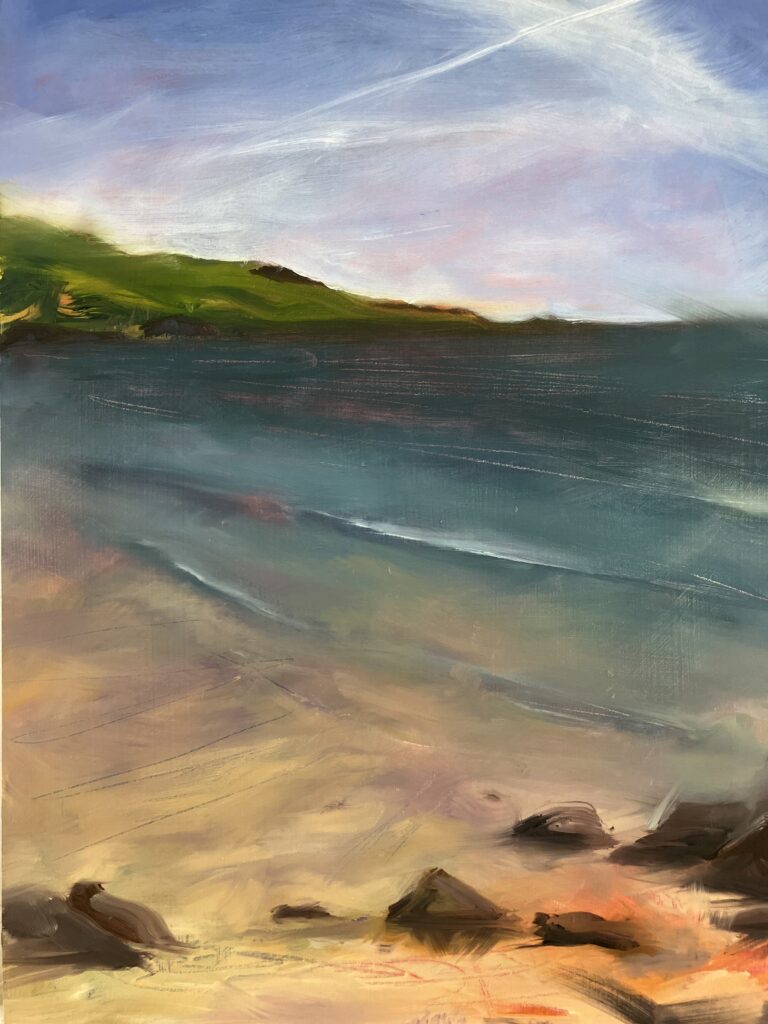
Ideal if you are a newcomer to oils, we have designed this course to give you the tips and tools you need to get started. Learn simple and dynamic approaches to painting with oils, responding to landscape and working from still life in the studio. This will provide you with a thorough introduction to this versatile and accessible medium.
The course’s step-by-step approach will feature demonstrations and exercises at each stage to build your confidence using oils. On the final day, you will use your studies to develop a more complex painting, either on oil paper or board.
Explore different methods of applying oil paint to enhance your understanding of how it behaves as a medium. You will gain insight into how swapping a brush for a palette knife can have as much impact on the mood and tone of a piece as colour can.
When it comes to colour, you will initially concentrate on building palettes using primary and secondary colours with white. Then you will move on to tertiary colours, taking inspiration from the St Ives landscape to produce colour grids. You will develop a keener eye for what to record when out sketching and be confident in mixing the colours you need without having to carry lots of paints. The aim of this course is to provide you with the skills, knowledge and confidence to buy your own oil painting equipment and create your own oil paintings. Whether in the studio or out in the landscape.
There will be solvents used on this course mainly low odour white spirit and an alternative to turpentine called Zest It. If you are particularly sensitive however to solvents the course might not be suitable.
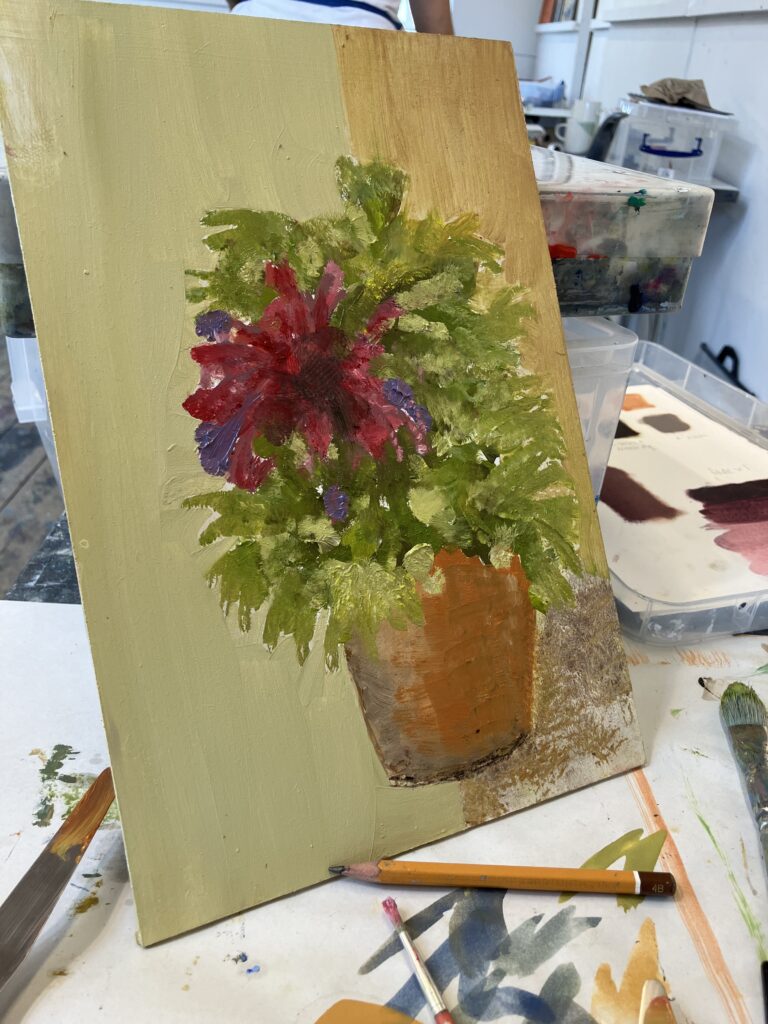
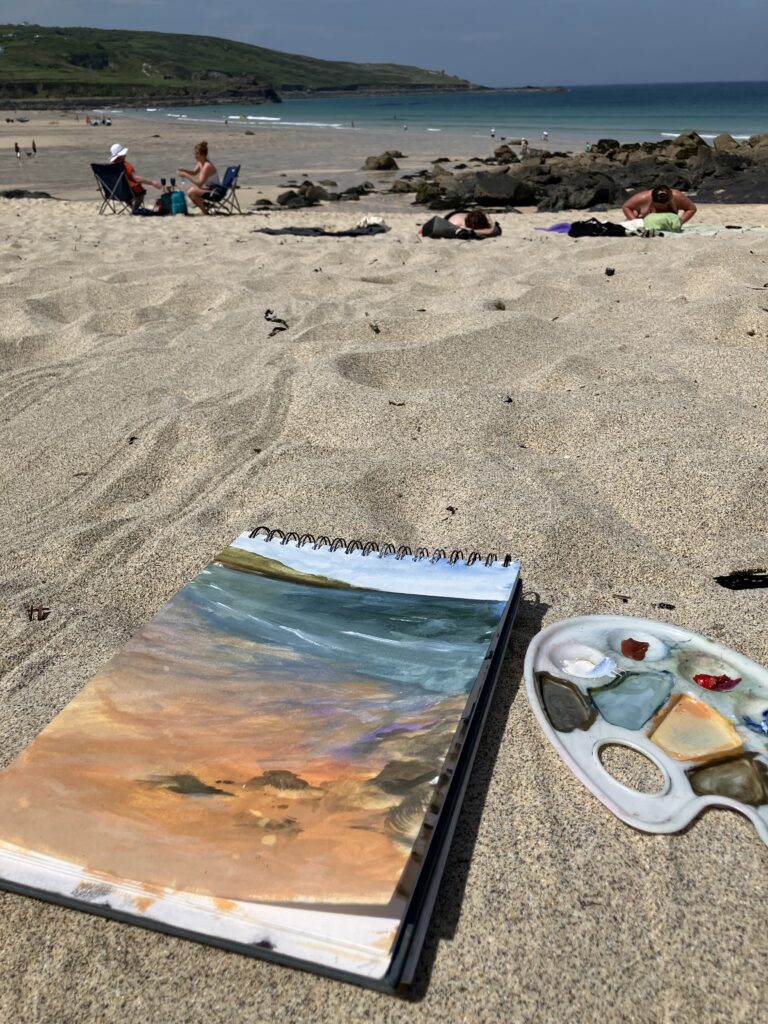
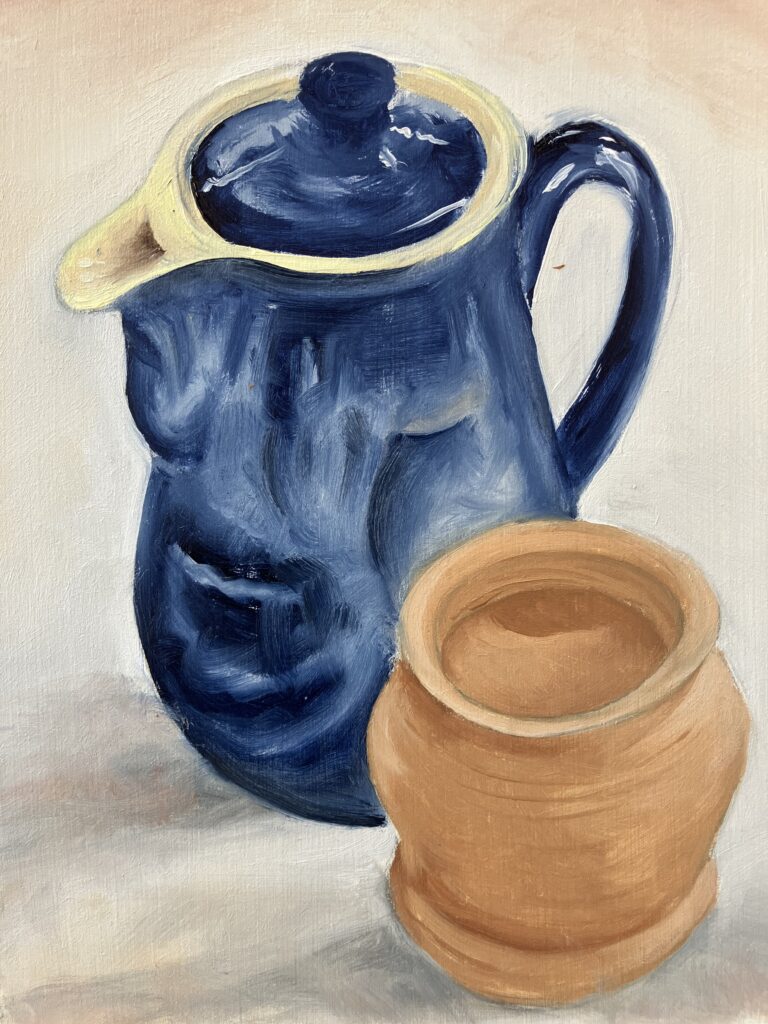
Day to day plan
This is a rough indication of what to expect over the course. However sometimes the structure of the days may alter depending on the nature of the group and weather.
Day 1
Beginning in the studio your tutor will describe and explain all the basic painting tools, mediums, equipment and terminology necessary to start you on your oil painting journey. After this you will learn how to mix paint to create secondary and tertiary colours and create a range of marks by adding and removing paint. In the afternoon, you will apply the skills learnt to create a still life painting.
Day 2
We begin by discussing and creating neutral and expressive grounds on boards or oil paper. Then we head outside to sketch in the landscape with pencil and charcoal. The afternoon is spent back in the studio working the sketches gathered in the morning into more considered paintings.
Day 3
In the morning, we go outside to produce oil studies ‘en plain air’ (weather permitting) either on the beach or around the harbour in St Ives. The afternoon is spent back in the studio either attempting a copy of your favourite painting or developing your landscape / still life skills.
What you will get out of this course
- To understand the properties of oil paint.
- To have confidence in tertiary colour mixing.
- To have confidence in working outside.
- The skills to develop paintings from drawing studies.
- The ability to put together your own oil painting kit.
Who would this course suit?
Whether you are a complete beginner in oil paints or would like to build your confidence working with them, this course is a wonderful starting point. It will be an opportunity to work outside on drawings and colour studies and to develop work back in the studio. You will therefore need to be happy carrying your own kit over steps, sand and grass and be happy to draw standing or sitting on the ground.
Taught by
What to Bring
Our studios are fully equipped and we provide you with all the materials you need for your course. However, if you have a favourite set of brushes or any specialist materials that you would prefer to use, please bring them with you.
Timings and Breaks
The first day starts at 10am and finishes at 4.30pm, please aim to arrive ten to fifteen minutes before the start time.
All course days after that start at 9.30am and finish at 4pm and there will be an hour for lunch. There are plenty of nearby places to eat and we will serve tea and coffee at break times during the day.
What our students say
Greg focused on making sure, as beginners, we had the understanding and confidence with oils.
Great opportunity to learn about oil paints and appropriate techniques both in studio and en plein air. Lovely teacher with great energy and knowledge.
Greg was easy mannered with such a wealth of information. Practical methods of developing a new skill, taught with a natural openness .
Greg gently pushed me into attempting things I would probably never try otherwise
a fantastic experience – it exceeded my expectations and has inspired me to unleash my creativity!
Greg was very generous with his time and knowledge…Best experience for a long time
Greg gave an excellent overview to oil painting technical disciplines plus an introduction to charcoal and gouache. It was intense but extremely satisfying to learn and appreciate the challenge in the ‘dance of chaos vs control’!
FAQs
Studio Courses
How can I get help in choosing a course?
Our friendly expert staff are always happy to discuss your needs and our courses in more detail to help you with your decision. Please call us on 01736 797180
How do I get my work home?
Tutors have special techniques for transporting oil paintings and the school has plastic folders available in our shop for £3.50 or do bring a portfolio.
For international students we are happy to arrange transportation of your work back home.
What do I need to bring?
Absolutely nothing! All materials and aprons are provided although some people do like to bring their own set of brushes.
What do I do for lunch?
Courses allow an hour’s break for lunch and there are numerous places nearby or you are welcome to bring a packed lunch into the studio.
What times do courses run?
Most of our courses start at 10am and end at 4.30pm on the first day. Subsequent days we start at 9.30am ending at 4pm.
Weekend Courses run 10am – 4pm on the first day but the final day starts at 9.30 and ends at 3.30 with a short lunch break to enable people to get home that evening.
Do you have to be experienced to come to the School?
The School is a very friendly and welcoming place for all ages and experience. Our drop-in life classes and August half-day workshops are ideal for those wanting to have a go for the first time. Most of our longer courses are also fine for novices.
If any of the courses do need a bit of experience we flag this up in the brochure and on the website.
Booking a Course
How can I reserve a place?
We will hold a provisional reservation for 24 hours if you give us a call whilst you find accommodation. Otherwise please book online or by telephone 01736 797180.
You can reserve a place with a £100 deposit; balance is due 12 weeks before course start date.
About St Ives
Where do I park?
The nearest long stay public car parks are the Island and Barnoon Long Stay Car Park, both a 5 minute walk away. In the peak summer months it may be easier to park at Trenwith Car Park by the leisure centre and walk down into town. If you don’t fancy the walk up the hill at the end of the day there is a shuttle bus which runs from outside the cinema.
How do I get there?
Public Transport: If you are coming from further afield the main train line runs into St Erth which is a 15 min taxi ride away or you can take the St Ives Bay Line which runs approx. every 30 minutes. The School is a 10 minute walk from St Ives station.
Driving: M5 will take you to Exeter where we recommend that you take the A30 across Bodmin Moor and into Cornwall. After passing Hayle, leave the A30 at St Erth roundabout for St Ives. Turn right at the second roundabout. This road will take you through Lelant and Carbis Bay into St Ives.
Where can I stay?
St Ives has a huge selection of hotels, guest houses and self catering accommodation to choose from. Please browse the art holidays St Ives section on our website and give us a call if you would like any help.
